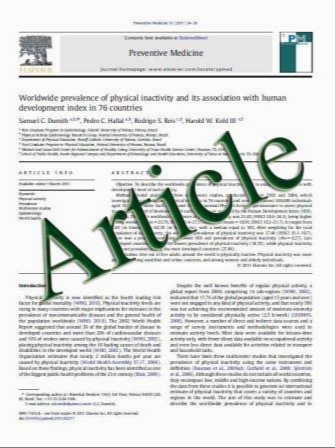Idiopathic scoliosis in Korean schoolchildren: a prospective screening study of over 1 million children
- نوع فایل : کتاب
- زبان : انگلیسی
- مؤلف : Seung-Woo Suh • Hitesh N. Modi • Jae-Hyuk Yang • Jae-Young Hong
- چاپ و سال / کشور: 2011
Description
Cross-sectional epidemiologic scoliosis screening was carried out to determine the current prevalence of scoliosis in the Korean population and to compare with the results of previous studies. Between 2000 and 2008, 1,134,890 schoolchildren underwent scoliosis screening. The children were divided into two age groups, 10–12-yearolds (elementary school) and 13–14-year-olds (middle school), to calculate age- and sex-specific prevalence rates. Children with a scoliometer reading C5 were referred for radiograms. Two surgeons independently measured curve types, magnitudes, and Risser scores (inter-observer r = 0.964, intra-observer r = 0.978). Yearly and overall prevalence rates of scoliosis were calculated. There were 584,554 boys and 550,336 girls in the sample, with a male to female ratio of 1.1:1. There were 77,910 (6.2%) children (26,824 boys and 51,086 girls) with scoliometer readings [5, and 37,339 of them had positive results with Cobb angles C10 (positive predictive value, 46.4%). The overall scoliosis prevalence rate was 3.26%; girls had a higher prevalence (4.65%) than boys (1.97%). Prevalence rates increased progressively from 1.66 to 6.17% between 2000 and 2008, with the exception of 2002. According to age and gender, 10–12-year-old girls had the highest scoliosis prevalence rates (5.57%), followed by 13–14-year-old girls (3.90%), 10–12-year-old boys (2.37%), and 13–14-year-old boys (1.42%). In girls and boys, prevalence rates dropped by 64.53 and 60.65% among 10–12-year-olds and 13–14-yearolds, respectively (P = 0.00). The proportion of 10–19 curves was 95.25 and 84.45% in boys and girls, respectively; and the proportion of 20–29 curves was 3.91 and 11.28%, which was a significant difference (P = 0.00). Thoracic curves were the most common (47.59%) followed by thoracolumbar/lumbar (40.10%), double (9.09%), and double thoracic (3.22%) curves. A comparison of the curve patterns revealed significant differences between genders (P = 0.00). We present this report as a guide for studying the prevalence of idiopathic scoliosis in a large population, and the increasing trend in the prevalence of idiopathic scoliosis emphasizes the need for awareness
Eur Spine J (2011) 20:1087–1094 DOI 10.1007/s00586-011-1695-8 Received: 16 May 2010 / Revised: 22 November 2010 / Accepted: 9 January 2011 / Published online: 28 January 2011


